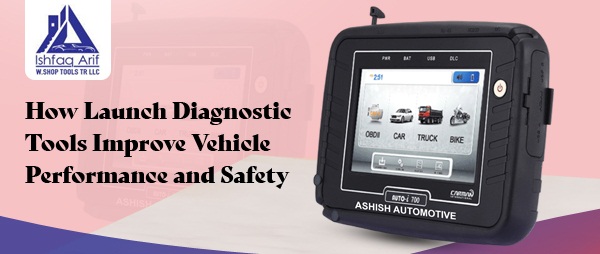
Have a Question? :
+971 55 7841839
Login / Register

17 Apr, 2025, 06:06 AM

Vehicle system problems can be found with the use of launch diagnostic tools. These tools guarantee optimal performance both before and following launch. They are essential to upkeep. Engineers, mechanics along technicians rely on them.
What Are Launch Diagnostic Tools?
Devices or software applications are known as launch diagnostic tools. They examine car systems to look for flaws and problems with performance. The onboard computer of the car is connected to these tools. They obtain system reports, real-time data, and error codes.
The ECU of the car can communicate with these gadgets. They have access to both live sensor data and recorded fault codes. Certain instruments offer repair recommendations and guided diagnostics. Others permit system resets and software upgrades.
1. Finding the Fault Codes
Error codes are produced by vehicles when problems arise. The codes are read and deciphered by these instruments. Mechanics make precise diagnoses. Guesswork and needless repairs are decreased as a result.
2. Tracking the Performance of the System
Engine performance is tracked using launch diagnostic tools. They examine sensor performance, pollutants as well as fuel economy. Preventive maintenance benefits from real-time data.
3. Ensuring Compliance and Safety
Safety standards must be met by modern automobiles. These devices check pollution controls, airbag systems as well as brake effectiveness. They contribute to roadworthiness.
4. Lowering the Cost of Repairs
Costly malfunctions are avoided by identifying problems early. Mechanics fix little issues before they get worse. This prolongs the life of the car.
5. Improving the Efficiency of Vehicles
Engine performance and fuel economy are enhanced by proper diagnostics. They identify sensor failures, malfunctioning injectors as well as clogged filters. Resolving these increases productivity.
6. Encouragement of Technological Developments
Modern cars include sophisticated electronics and software. Diagnostic tools reprogram control modules and update firmware. This maintains cars operating at their best.
Contemporary Launch Diagnostic Tool Features
1. Wireless Communication
Wi-Fi and Bluetooth are used by many gadgets. This enables software upgrades and remote diagnostics.
2. Adaptability To AVariety Of Vehicles
Certain instruments are compatible with various auto brands. Both manufacturer-specific protocols and OBD2 are supported.
3. Real-Time Data Transmission
Real-time engine performance monitoring is done by technicians. This aids in debugging complicated problems.
4. Interfaces That Are Easy To Use
Operation is made simpler with touchscreen displays and user-friendly menus. These tools are useful even for novices.
5. Integration With TheCloud
Cloud servers are used by some technologies to store diagnostic data. This makes it possible to access from many devices
1. Qualified Mechanics
These instruments are essential for precise diagnosis in workshops. They guarantee correct adjustments and expedite restorations.
2. Automobile Manufacturers
Vehicle systems are tested by manufacturers prior to delivery. They confirm that quality standards are being followed.
3. Managers Of Fleets
Fleet managers keep an eye on the condition of their vehicles. This lowers operating expenses and avoids malfunctions.
4. Automobile Fans
Diagnostic instruments are used for maintenance by do-it-yourself mechanics. They resolve little problems without going to a workshop.
Technology is still developing. Artificial intelligence will be used in future technologies to improve diagnoses. They will include features for predictive maintenance. The use of cloud-based diagnostics will increase. Before problems arise, vehicles will self-report.
Launch diagnostic tools are necessary for maintaining contemporary cars. Their usage is advantageous to both professionals and automobile owners. Vehicle dependability is increased by selecting the appropriate tool. Diagnostics will become even more intelligent with future developments.